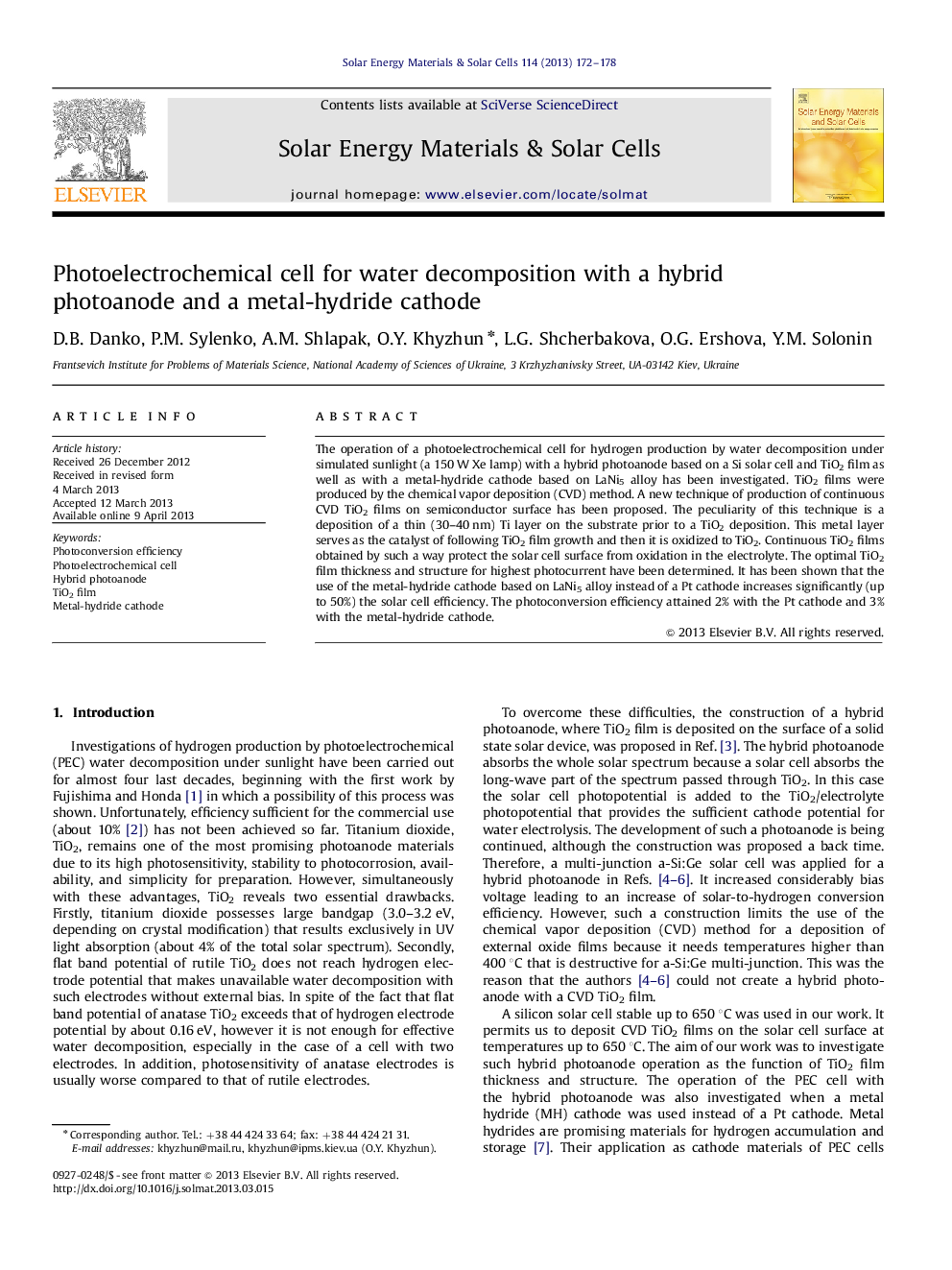| Article ID | Journal | Published Year | Pages | File Type |
|---|---|---|---|---|
| 78505 | Solar Energy Materials and Solar Cells | 2013 | 7 Pages |
•Photoelectrochemical cell with a TiO2 hybrid photoanode was investigated.•The optimal TiO2 film thickness and structure was established.•The photoconversion efficiency has attained 3%.
The operation of a photoelectrochemical cell for hydrogen production by water decomposition under simulated sunlight (a 150 W Xe lamp) with a hybrid photoanode based on a Si solar cell and TiO2 film as well as with a metal-hydride cathode based on LaNi5 alloy has been investigated. TiO2 films were produced by the chemical vapor deposition (CVD) method. A new technique of production of continuous CVD TiO2 films on semiconductor surface has been proposed. The peculiarity of this technique is a deposition of a thin (30–40 nm) Ti layer on the substrate prior to a TiO2 deposition. This metal layer serves as the catalyst of following TiO2 film growth and then it is oxidized to TiO2. Continuous TiO2 films obtained by such a way protect the solar cell surface from oxidation in the electrolyte. The optimal TiO2 film thickness and structure for highest photocurrent have been determined. It has been shown that the use of the metal-hydride cathode based on LaNi5 alloy instead of a Pt cathode increases significantly (up to 50%) the solar cell efficiency. The photoconversion efficiency attained 2% with the Pt cathode and 3% with the metal-hydride cathode.
